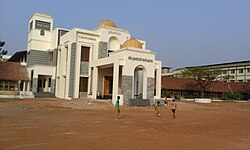

An orphanage is a residential institution, total institution or group home, devoted to the care of orphans and children who, for various reasons, cannot be cared for by their biological families. The parents may be deceased, absent, or abusive. There may be substance abuse or mental illness in the biological home, or the parent may simply be unwilling to care for the child. The legal responsibility for the support of abandoned children differs from country to country, and within countries. Government-run orphanages have been phased out in most developed countries during the latter half of the 20th century but continue to operate in many other regions internationally. It is now generally accepted that orphanages are detrimental to the emotional wellbeing of children, and government support goes instead towards supporting the family unit.
Contents
- History
- Foundling Hospitals
- Historical Development in the 18th and 19th century
- Deinstitutionalization
- Comparison to alternatives
- Foster care
- Group homes
- Kinship care
- Commercial orphanages
- Worldwide
- Europe
- Sub-Saharan Africa
- South Asia
- East and Southeast Asia
- Middle East and North Africa
- Former Soviet Union
- Oceania
- North America and Caribbean
- Central and South America
- Significant charities that help orphans
- In popular culture
- See also
- References
- Works cited
- Further reading
- External links
A few large international charities continue to fund orphanages, but most are still commonly founded by smaller charities and religious groups. [1] Especially in developing countries, orphanages may prey on vulnerable families at risk of breakdown and actively recruit children to ensure continued funding. Orphanages in developing countries are rarely run by the state. [1] [2] However, not all orphanages that are state-run are less corrupted; the Romanian orphanages, like those in Bucharest, were founded due to the soaring population numbers catalyzed by dictator Nicolae Ceaușescu, who banned abortion and birth control and incentivized procreation in order to increase the Romanian workforce. [3]
Today's residential institutions for children, also described as congregate care, include group homes, residential child care communities, children's homes, refuges, rehabilitation centers, night shelters, and youth treatment centers.



















